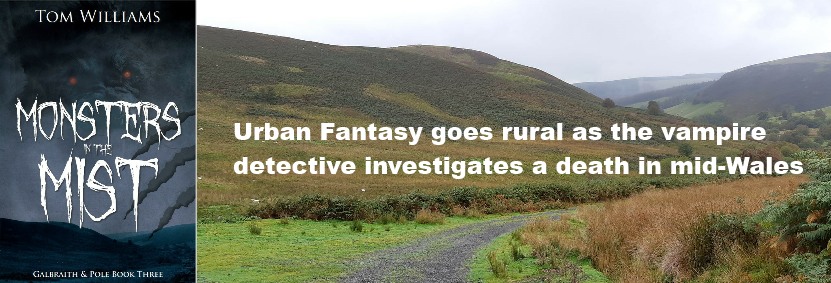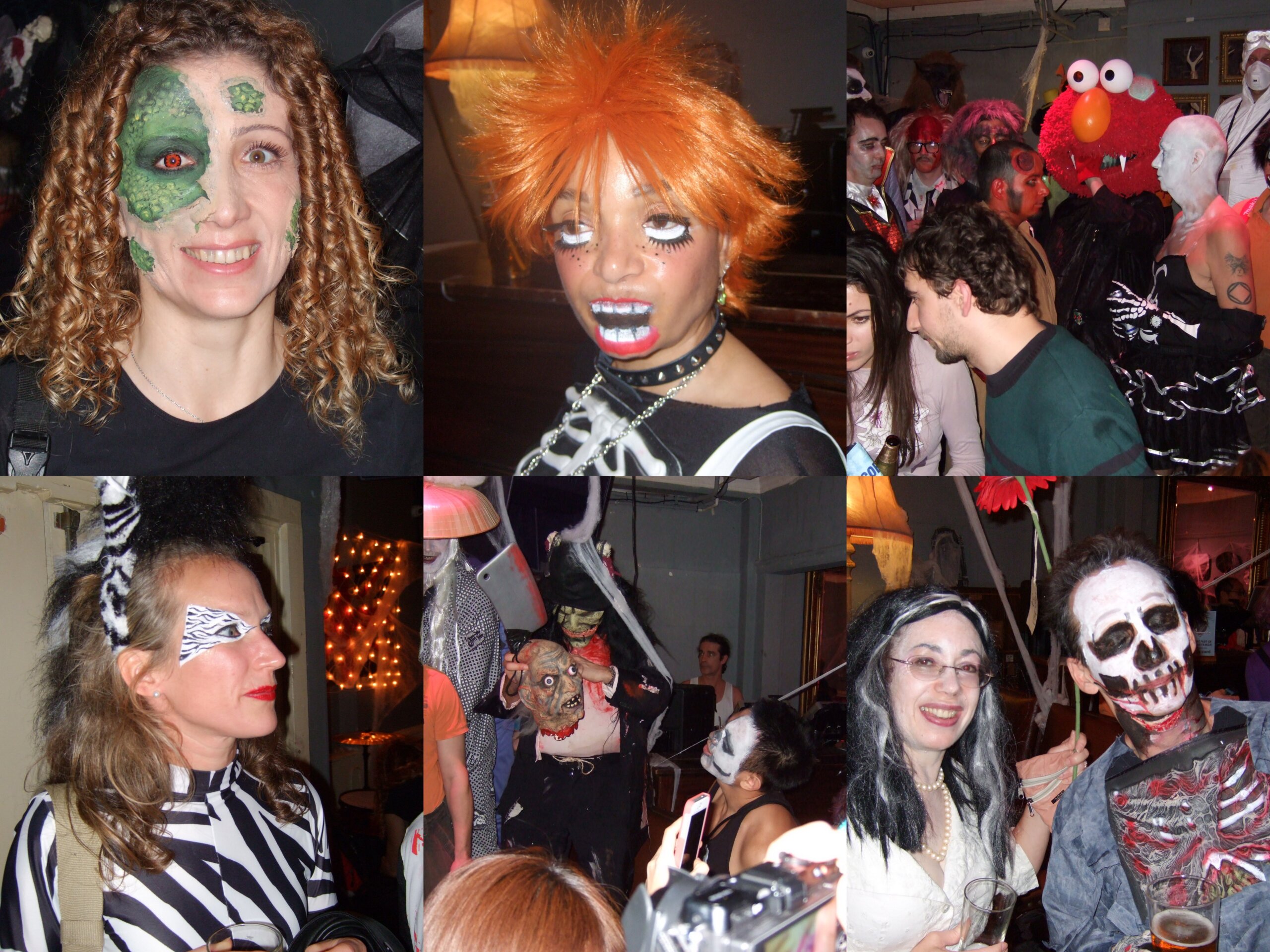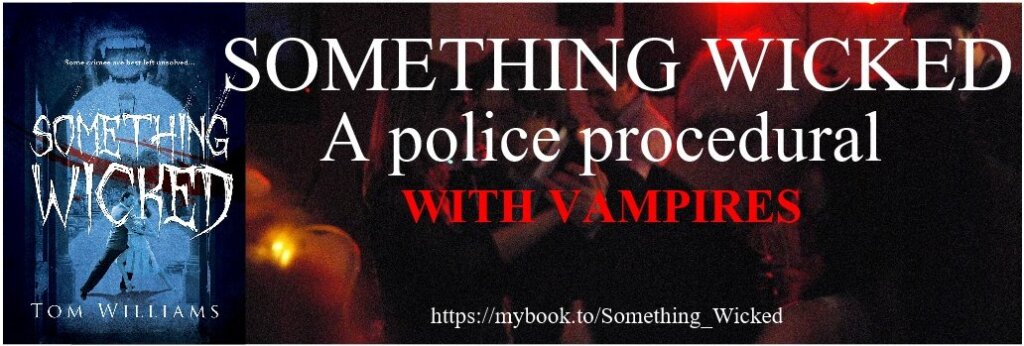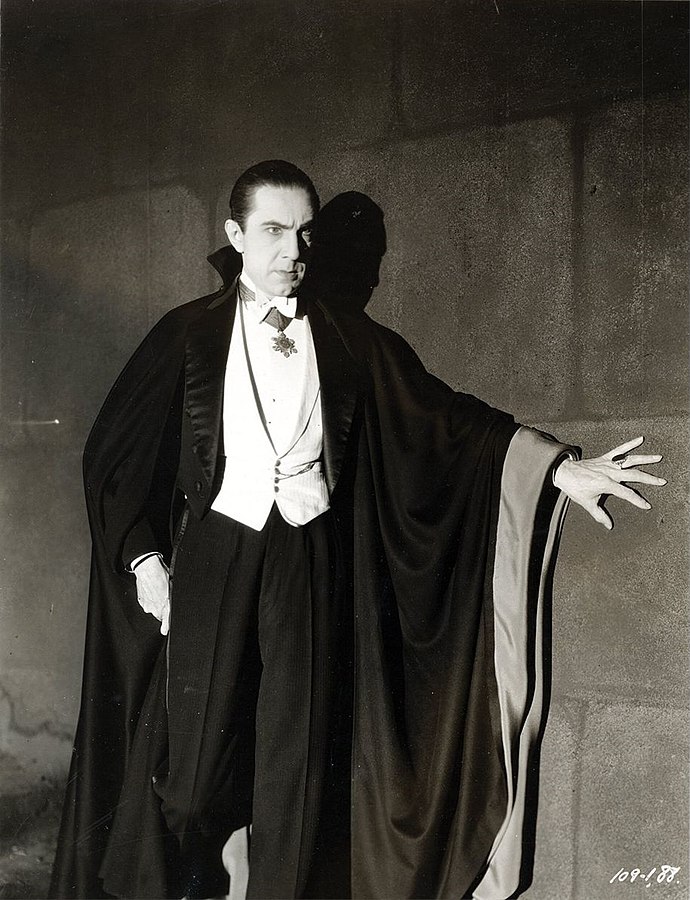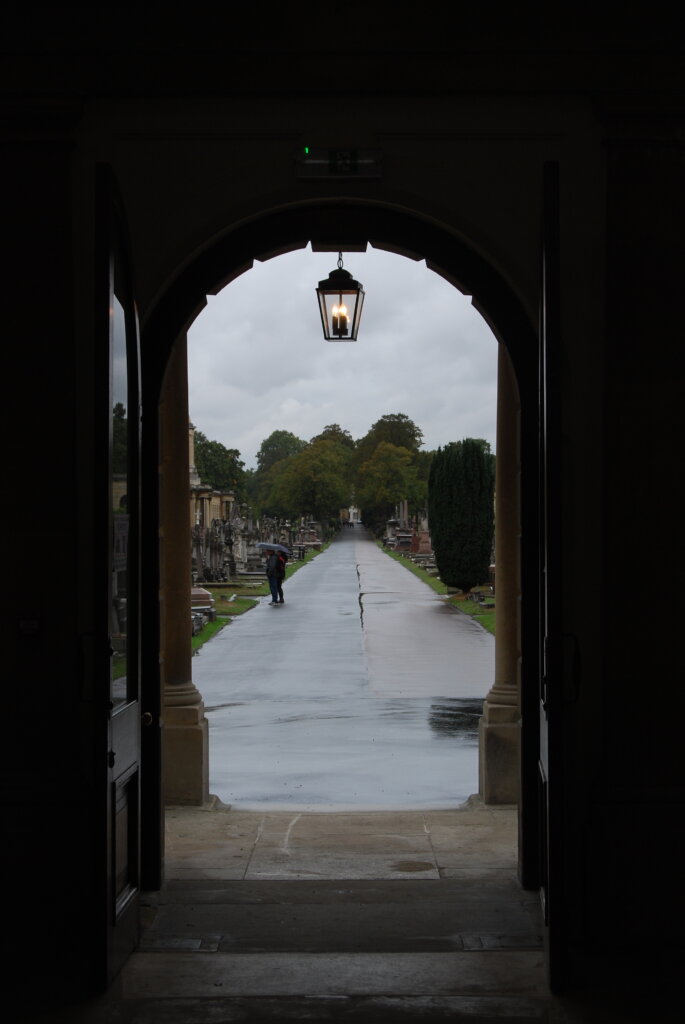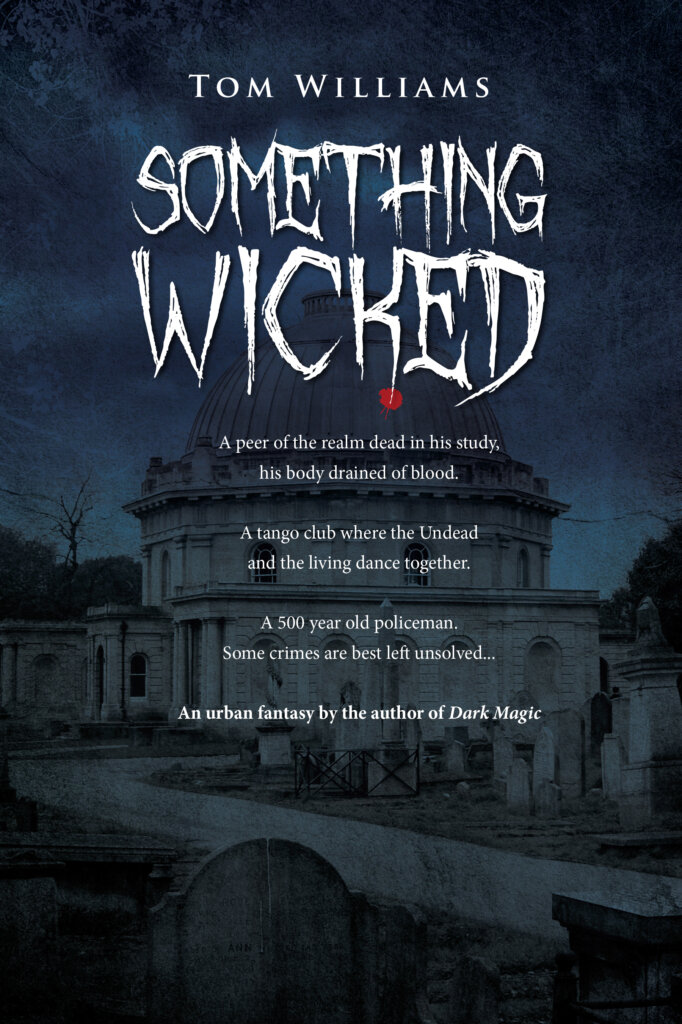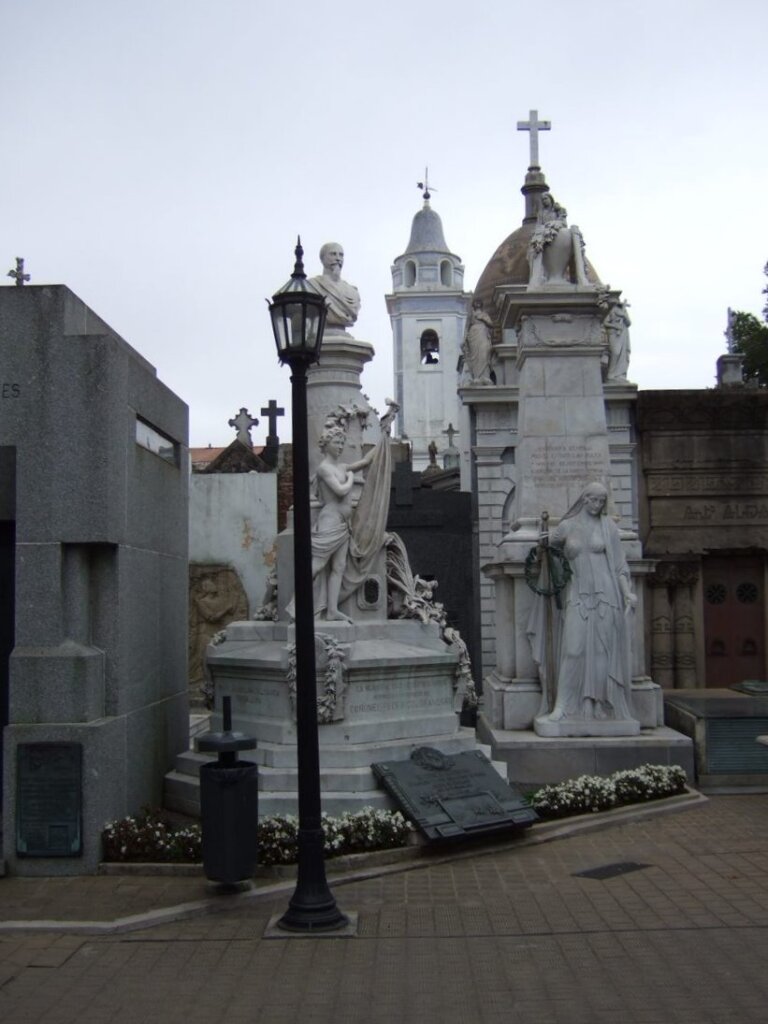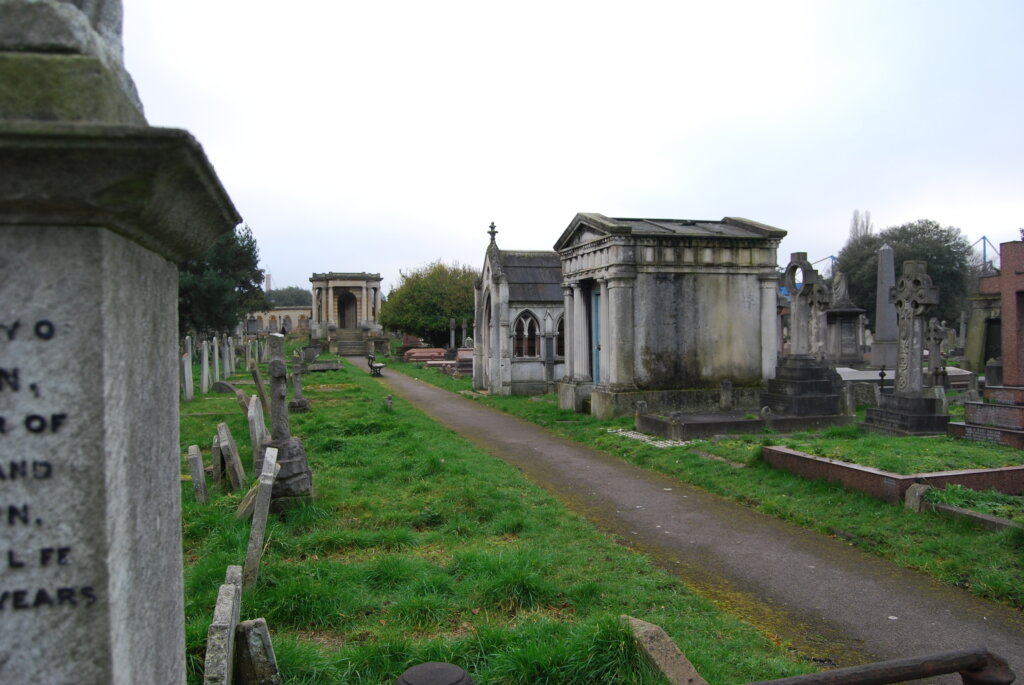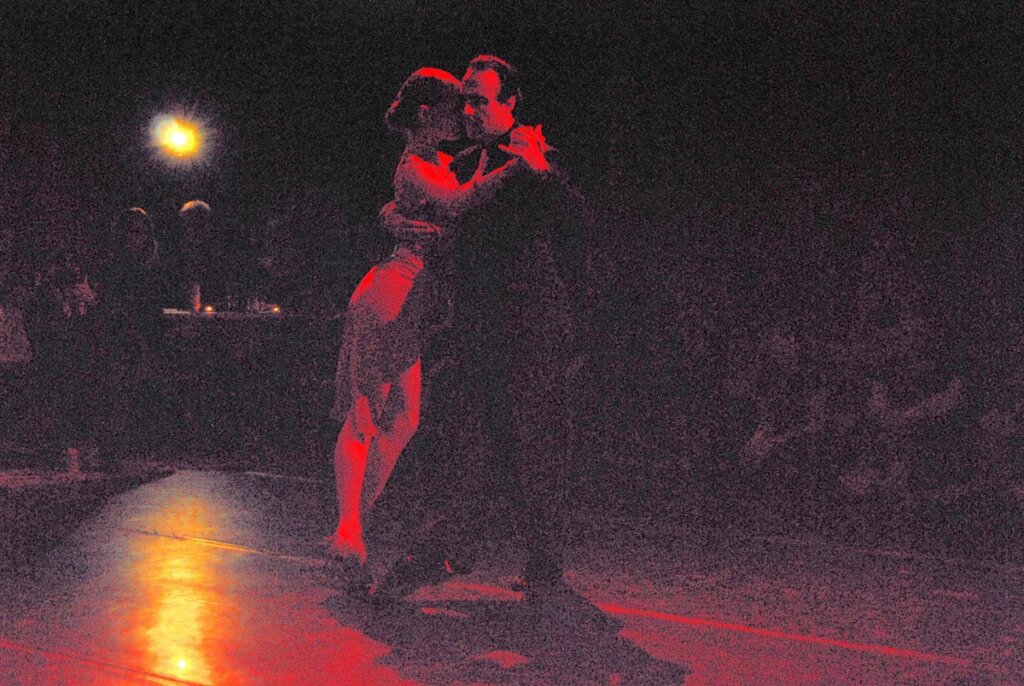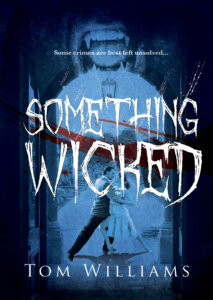A short story for Valentine’s Day
It’s been a long time since I wrote a Galbraith & Pole book. I’ve been tied down with the next of my James Burke historical novels for almost a year, but it’s out there with beta readers now, so I’ve had time to think about my vampire policeman, Pole, and his human partner, Chief Inspector Galbraith.
I’m an old softie deep down, so I thought it would be nice to write a story for Valentine’s Day. It’s a bit darker than your usual Valentine tale, but then Pole is one of the Others, as the vampires call themselves, so what did you expect? And Pole being Pole, and me being me, there’s a lot of tango in it.
You don’t need to have read any of the Galbraith & Pole books to enjoy the story, though it would be nice if you had. (And if you have, and you haven’t left a review, could you please spread the Valentine love by reviewing them now.) There are buy links at the end of the post.
Enjoy!
Love, death, and tango.
It had been quiet week. Galbraith had taken the opportunity to spend an evening with Pole. It had been a while since he had sampled the vampire’s scotch and he thought he was overdue a companionable drink.
It had been an unusually cold February and he appreciated the cheerful warmth of a traditional open fire. It was a rare to find real flames flickering in a London flat these days and Galbraith enjoyed the novelty. There were advantages to a friend who had formed their habits of life hundreds of years ago and stayed with them when most people were more than happy with central heating.
He raised his glass. “Here’s to the cold weather. It keeps criminals home in the warm and gives us a quiet life.”
Pole returned his salute. “Life in what you still insist on thinking of as the supernatural world has been uneventful too. None of the Others have been taking illicit Mortal blood. No werewolves have been glimpsed prowling the Royal Parks. All is right with the world.” He gestured toward the leather bound volumes in his book case. “I may even take the opportunity to catch up on my reading.” He sipped at his whisky. “And it has been a while since I went out dancing.
“Ah, yes,” said Galbraith. “Tango.” He sat quietly for a while thinking about the dance. He’s been dancing more often since he had started going out with Jane Ellis. ‘Going out.’ It made him sound like a teenager and he hadn’t been a teenager for longer than he cared to think about. The idea made him chuckle.
Pole raised an eyebrow. “Something amusing?”
“I was thinking about tango.” Well, it was almost true. He hurried on before Pole asked anything else. His friend had an unnatural ability to know what he was thinking and he was not sure that he wanted to discuss his relationship with Ms Ellis. “How did you come to start dancing tango?”
Pole raised his glass but, instead of drinking, he sniffed it thoughtfully before setting it down untouched and leaning back in his armchair.
“It was a long time ago,” he said. “Not that long in terms of my life, but more than half a century before you were born.”
Galbraith said nothing. His friend, he knew, would tell the story in his own time.
“It was 1913. They called it ‘the year of the tango’. The dance had just been introduced to Europe by rich Argentinians doing the Grand Tour.” Galbraith must have looked quizzical because Pole raised an admonitory finger. “Argentina was one of the richest countries in the world back then. Their rich young men went to all the best places and wherever they went they took this dance. Such a scandal!” He smiled and Galbraith imagined him all those years ago, enjoying watching this shocking new dance. “The Pope condemned it. The Queen refused to allow it to be danced in her presence. It was, according to the papers, lascivious and lewd, bodies pressed together, legs intertwined. It presaged, they said, the end of civilisation and all that was pure and decent. Of course I had to see it.”
Pole began to describe the scene. His voice seemed to grow deeper and Galbraith found himself feeling drowsy, sitting there by the fire, the whisky warming his veins. He had seen this trick of Pole’s before, so he was hardly surprised when the vampire’s voice seemed to fade and he was there, in 1913, watching a room full of young people dancing tango. He smelt cigarette smoke and perfume.
The men were in suits or dinner jackets, bow ties askew as they danced. Galbraith had expected to see girls in flapper dresses with bobbed hair but the women in his vision were wearing Edwardian clothes. The dresses were well below mid-calf but gave the impression of being more daring by having shorter tops worn over longer layers. Biased hems revealed ankles and some skirts were split creating opportunities for the dancers to allow glimpses of calves as they span around their partners, legs flashing out in what Galbraith thought must have been considered very daring dance steps at the time.
The men’s clothes were respectable blacks and whites, but the women seemed to sport an extraordinary amount of orange. Their fabrics were not only brightly coloured but lightweight, almost gossamer, adding to the sense that Victorian standards had been well and truly abandoned. Their hair was not bobbed but it was worn short, elaborately curved or waved. Respectable hats had been virtually abandoned but feathers, turbans and fascinators were all the rage – nothing that would get in the way of dancing cheek to cheek with their partners.
The room was lit by a chandelier and the light sparkled off jewelled broaches and rhinestones sewn to seams. A live band – violins, a piano, a double bass, and the concertina-like bandoneon – played on a platform at one side of the room and the floor was filled with couples dancing, if not lasciviously, definitely very close together. Galbraith could see why the Pope was not amused.
Even in that sea of bright young things, one girl stood out. She was petite with a dress a daring inch or two shorter than most, her lips painted in a brilliant vermillion cupid’s bow. Her hair was chestnut brown and her green eyes held more than a hint of mischief.
As Galbraith watched, an older man approached her, took her in his arms and whirled her away across the room. To his astonishment, he recognised Pole. The vampire seemed somehow more youthful, although he had changed his appearance hardly at all.
The scene flickered for a moment and was gone.
“Her name was Madelaine,” said Pole, “and I was very taken with her.”
“You were in love.”
Pole made a small, dismissive gesture with the hand that was not holding his glass.
“We Others do not love as Mortals love. It is not that we don’t have a soul, or that we do not feel things as you do. But we are, by our nature, different. We will not have children together. We cannot watch each other grow old. We will live, not for ever, but for a very, very long time. But we are trapped in the life we had when we became what we are. Mortals change as their bodies change. They grow thicker in the waist and thinner in the hair. They become less impulsive and more thoughtful. And, as they change, so they and their true love change together, growing into each other’s shape. That, I think, is what true love is for Mortals. And we can never have that. We are almost changeless. If I were to say to a lover that we will be together until we die, that’s an unimaginably long time to live, unchanged, unyielding, day after endless day.”
Galbraith attempted a sympathetic nod, but he was not convinced. He had seen the way Pole looked at her as they danced. The vampire’s insistence that he had not been in love was no more convincing than that of any young man helplessly infatuated with a beautiful girl.
“In any event,” said Pole, “a few weeks after I met Madelaine, I found myself with more pressing concerns at these tango parties.”
Galbraith nodded and waited. As ever, Pole would not be hurried with his story.
“Several young men died in what the police at the time referred to as ‘mysterious circumstances’. Unfortunately, to those who knew of the existence of the Others, and our arrangement to preserve peace between the Others and Mortals, the circumstances were anything but mysterious. They were what alarmists insist on calling ‘vampire attacks’. The bodies were found drained of blood. They were ‘respectable’ young men …” (Pole’s tone suggested that he did not think they were respectable at all.) “By which I mean that they had money and that their deaths could not therefore be ignored by the authorities. I was called in to investigate.”
Pole had no official status with the police in those days. Section S had yet to come into existence, but, he said, it was not difficult to discover that all that the men had in common – besides that they were men and had money – was that they enjoyed the new craze for tango.
“More than that, they frequented the same clubs where I danced with Madelaine. In these circumstances, I felt that it was no less than my duty to attend as many of the dances as I could – purely, of course, to let me keep an eye out for any unusual activity.”
Galbraith could not resist a smile. “And if that meant you spending more time with Madelaine, that was a burden you felt you had to bear.”
Pole’s glance, Galbraith felt, could fairly be described as ‘icy’.
“Indeed. In fact, Madelaine’s presence was helpful because it explained my frequent attendance.” Pole’s expression suggested that any ironic comments from Galbraith would not be appreciated.
“After a week or two, I was dancing almost every night, but I never saw anything suspicious. The deaths continued and arrangements were made for me to see the bodies. I recognised most of them from the dances I had attended. I had, of course, seen many deaths over the centuries, but there was something strangely disturbing about these. I would have danced alongside them one night and viewed their bodies in the morgue the next morning. In many cases, I had seen them dancing with Madelaine, mere hours before their deaths. It was hardly surprising. I would dance only two or three turns in the evening with her – more would have been considered improper – and she was a popular girl. Even so, it was unsettling.”
Again, Pole’s voice deepened and Galbraith was back in 1913. It was a different club. The crowd looked more monied. There were more diamonds and rubies in the elaborate brooches. Smartly dressed staff circulated with drinks. He saw Pole dancing with a tall, thin girl whose hair was held in place with a headband which sported a yellow feather. Pole himself was wearing a smart dinner jacket. Galbraith was sure that Pole would have explained it as an effort to be inconspicuous among the rich men showing off their fine tailoring, but Galbraith saw Madelaine glance in Pole’s direction with apparent approval and Galbraith suspected that Madelaine’s approval had featured in Pole’s choice of wardrobe.
The music ended and Pole escorted his partner back to her seat before looking about to catch Madelaine’s eye. He was too late, though. A plump man, rather older than most of the crowd, had already claimed her for the next dance. Frustrated, Pole strolled towards the bar, and settled himself with a drink while he watched the dancers.
Galbraith heard Pole’s voice, as if from a great distance. “You must remember that these were simpler times. There were fewer records kept. People lived in villages that they never left. If they took it in their heads to come to live in London, they had by today’s standards, a remarkable lack of documentation. And the Others were less organised than today. I recognised a few of them at the club, but there may well have been more who were unknown to me. I am no more able to recognise my fellows than you are, although we share some characteristics that are a bit of a giveaway if I spend time with them. In the bustle of a dance club, though, it is not at all obvious. Afterwards, I blamed myself. I felt I should have realised, although I really cannot say how.”
The scene shifted. The club was gone and Pole was in a white-tiled room, looking down at a body lying on a table, covered by a sheet. Someone drew back the revealing the face of the older man who had been dancing with Madelaine. The pallor of the skin told him all he needed to know, even before the pathologist had explained that death had been caused by massive blood loss.
The vision faded and Galbraith found himself back in Pole’s flat. His friend looked, even for him, unnaturally pale, and he was making serious inroads into his Scotch.
“I asked about how the body had been found. Usually they were at home, sometimes in a drawing room, sometimes in bed. There were never signs of a struggle. It seemed reasonable to assume that they had been killed by somebody they had had no suspicions of. The fact that some were found in bed rather suggested a woman might have been involved, although it can be dangerous to make assumptions about these things. This gentleman – his name, I recall, was Padmore – had been found in a hotel. He was not the first to have been discovered in such an establishment. Usually they were small places, not overly concerned about the respectability of their guests. The staff had either never seen anyone accompanying the victims or they considered it wiser to claim ignorance. Mr Padmore was an exception. When I visited the hotel, I was able to interview a bellboy who said that he had seen the deceased enter the hotel accompanied by a young woman. I naturally enquired what the young woman looked like but the bellboy said that, discretion being the watchword of the establishment, he had not taken a good look at her. All he could say was that she had chestnut hair and was very pretty.”
He looked, Galbraith thought, suddenly much older.
“I should have known then, but there were lots of pretty girls dancing tango in those days. It could have been any of them.”
Pole continued to go out dancing and kept a special eye out for girls with chestnut hair. “Madelaine noticed, of course, and teased me horribly, but I saw nothing out of the ordinary. And then, one night, I was delayed – another case, involving an unfortunate incident in Soho, a place that well deserved its evil reputation in those days. Once I could get away, I decided to try to meet Madelaine anyway.” He took another pull at his Scotch. “She was leaving as I arrived. She was moving off away from the direction I was walking and she didn’t see me. She was hanging on the arm of a tall fellow I had noticed there the previous night: a silly looking sort of chap with a monocle.”
It had been over a hundred years ago, but Galbraith could still hear the jealous bitterness in his voice.
“I followed them. I told myself I was just doing my job, but I think I was angry and wanted to spy on her.” He paused, thinking back to that night. “They walked to a house in Fitzrovia and I watched them climb the front steps and vanish inside. After a few minutes I saw a light go on in an upper room. I confess it distressed me. In any case, there was nothing to be gained by staying there. I had lost any interest in dancing so I went home and worked for the night.”
There was a long silence. The two men sat there, watching the flames in the grate.
Eventually, Pole spoke again.
“The next evening, I received word of the latest death. A tall young man who lived in Fitzrovia. I asked if he wore a monocle and, of course, he did.”
Pole topped up his drink.
“I confronted her the next night. I asked if I could walk her home. I never had before, and she seemed really happy that I did then. When we arrived, I insisted on entering, although it was obviously beyond all the bounds of propriety. I felt, by then, that propriety could go hang.”
He took another drink before, with an almost visible effort, pressing on with the story.
“When I told her what I knew, she did not deny it. I had never told her of my condition, but she said she was not surprised. She had, she claimed, always felt a particular connection to me and she supposed that the fact that neither of us was Mortal explained it. She had been changed by somebody who had been killed shortly after, and she had made her own way in our world, without anybody to guide her. Without help, she gave in to her cravings. Now she was as dependent on fresh human blood as any addict is addicted to their drug of choice.”
Galbraith watched as he struggled with the memory of that night.
“I told her that I could help her. That I knew people who could control her behaviour. It was, as far as our kind was concerned, the beginning of the modern world. We had scientists, doctors and psychiatrists helping the Others away from their old ways into the position we have today where we can live quietly alongside Mortals. It’s a precarious balance but it lets us survive in a world that lacks the dark corners where we used to live. It can …” For a moment there was a flash of the usual urbane Pole, as he gestured around his flat. “It can be very comfortable.”
“We had a private hospital out in Surrey. It was quite an isolated spot in those days and there was a high wall to ensure privacy.”
Again, Galbraith found himself back in the past, watching Pole and Madelaine. They were walking in the grounds of a large house. It was a sunny day and banks of flowers made a brilliant showing in the garden but Madelaine seemed in no mood to enjoy it. She had lost weight and, in a respectable full-length skirt, she was barely recognisable as the vivacious young woman from the club. Her eyes were sunk in her face and she twitched nervously, her hands constantly pulling at her blouse. Pole was alongside her, talking gently. Galbraith could not hear what he was saying, but from time to time he would reach for her hand and she would take it for a minute or two, before snatching it away and once more fiddling with her clothes.
Pole’s voice filtered into the vision. “She found it hard there, away from the life she had built for herself in London, but I had no choice. She had to be kept locked away until she had learned to master her overpowering desire for blood. I visited as often as I could but I found there were increasing demands on my time. The international situation was deteriorating and the arrangement the Others had made with the Crown meant that I was often sent on missions into Europe as tensions built, and Britain and Germany started to spy out the land for the conflict we all knew was coming.”
The visions changed and Galbraith saw a kaleidoscope of images: Pole on a cross-channel steamer; an explosion in a munitions factory; Pole opening a safe in a darkened room.
“The irony was that it was such a beautiful summer. I even began to think that the treatment they were giving Madelaine might be starting to work. And then, suddenly we were at war.”
Galbraith saw Pole in uniform, his polished Sam Browne belt shining against the khaki jacket.
“I was officially a soldier but I spent little time in the trenches. I saw enough to realise how bad it was – almost as bad as our Civil War.” Pole’s face twitched. He never spoke of those days, but Galbraith knew that he had lived through the Civil War and the memory still haunted him. Now, though, Pole was remembering the more recent conflict. The images seemed to spill from Pole’s mind in an uncontrolled torrent. Galbraith saw the rats eating the bodies just out of reach in No Man’s Land. He heard the guns and the cries of the wounded. He smelt mud and blood and the stench of men crammed together with no proper latrines or ways to clean themselves. Then, mercifully, the visions stopped and he was back in Pole’s flat.
“My feelings for Madelaine seemed very petty in the midst of all that suffering and death. But, as soon as I could return to England on leave, I went to visit her again.”
Galbraith saw Pole, incongruous in his uniform, once again walking through the garden with Madelaine. It was Autumn and the leaves were turning brown. Madelaine did look better. She took his hand and smiled at him, but she was still painfully thin.
“They told me that I should spend time with her in her room. The psychiatrist there held very advanced views for the period.”
The vision continued and Galbraith was briefly concerned that he was playing the part of a voyeur in an intimate meeting, but he should not have been worried. Pole did remove the stiff Sam Browne belt and eventually discarded the jacket. What followed might have been considered risqué in 1914 but was, by 21st century standards, a very restrained display of affection.
“The hospital had been experimenting with alternatives to fresh blood and she had been finding it difficult to cope with these but, after we had sat together for a while, she said she felt so much better that she would try again to eat a plateful of the diet they were trying to wean her onto. I was happy that she was making the attempt, seemingly at least in part to please me. I went cheerfully to the kitchens and returned bearing a plate of some sort of blood meal. I admit I did not think it looked particularly appetising, but she made a valiant effort, eating about half of it. I left, convinced that I had been able to do some good.”
Pole was quiet for a while. It seemed to Galbraith that he was playing back in his head the scenes of that day but, if he was, these were not images that he was happy to share.
“I had almost reached the door when I felt that there was something wrong about the way my Sam Browne belt hung against my body. The holster was too light. I unbuttoned the flap and saw Madelaine’s hairbrush where my revolver should have been. She must have taken the weapon when she sent me to bring her the food.
I turned and ran back towards her room. I had almost reached it when I heard the shot.
She was lying on the bed, a coverlet across her body. One arm had fallen to the side. The other still held my revolver at her breast. She had shot herself through the heart. I could not see the wound but the blood was already soaking through the bedcover.”
There was a note, he said.
“It told me that she loved me but that she could not live with her condition. That I should go back to the war and forget about her. At the bottom, where she had signed her name, the ink was smudged as if a tear had dropped on it. Which, of course, is impossible, as we Others do not cry.”
Galbraith could think of nothing to say. The two friends sat in silence while they finished their drinks. When he got up to leave he thought, for a moment, that he glimpsed moisture in the vampire’s eyes, but then he told himself it was a trick of the light. Vampires, as Pole had said, do not cry.
He stepped out into the street, that February evening, and started home. He thought of Jane Ellis and Madelaine and lost chances and lost love. It was almost Valentine’s Day. He would ask her if she would go dancing with him.
The Galbraith and Pole books
There are three Galbraith & Pole books.
Something Wicked introduces Chief Inspector Pole when he assists Chief Inspector Galbraith in investigating the death of a peer of the realm and introduces him to tango. Vampires love tango, partly because it’s usually danced at night.

In Eat the Poor, Pole teams up with Galbraith again when a werewolf is roaming London. As the investigation moves to Westminster, politics starts to get bloody.

In Monsters in the Mist, the urbane Chief Inspector Pole and the very urban Galbraith are both out of their comfort zone investigating a savage killing on the hills of mid-Wales. Is it another werewolf, or something even more sinister?
